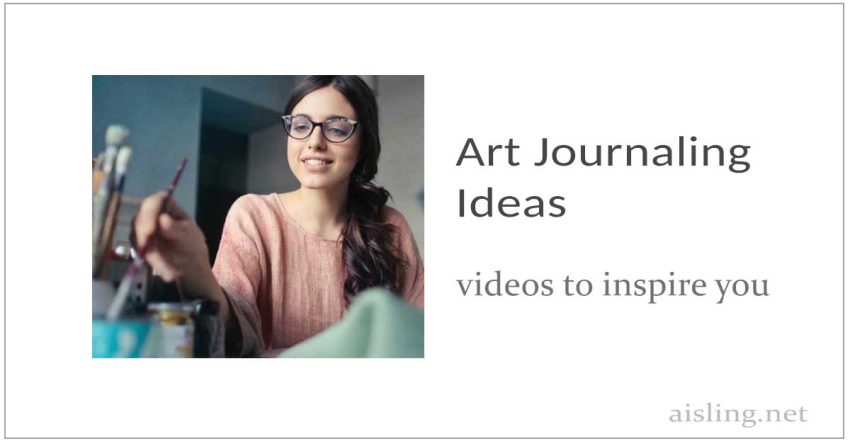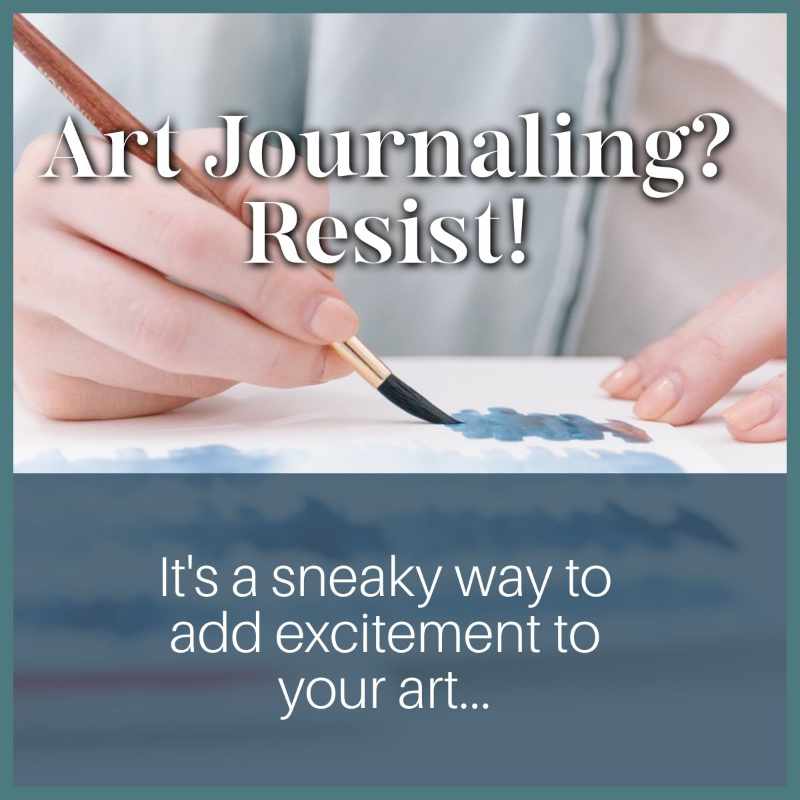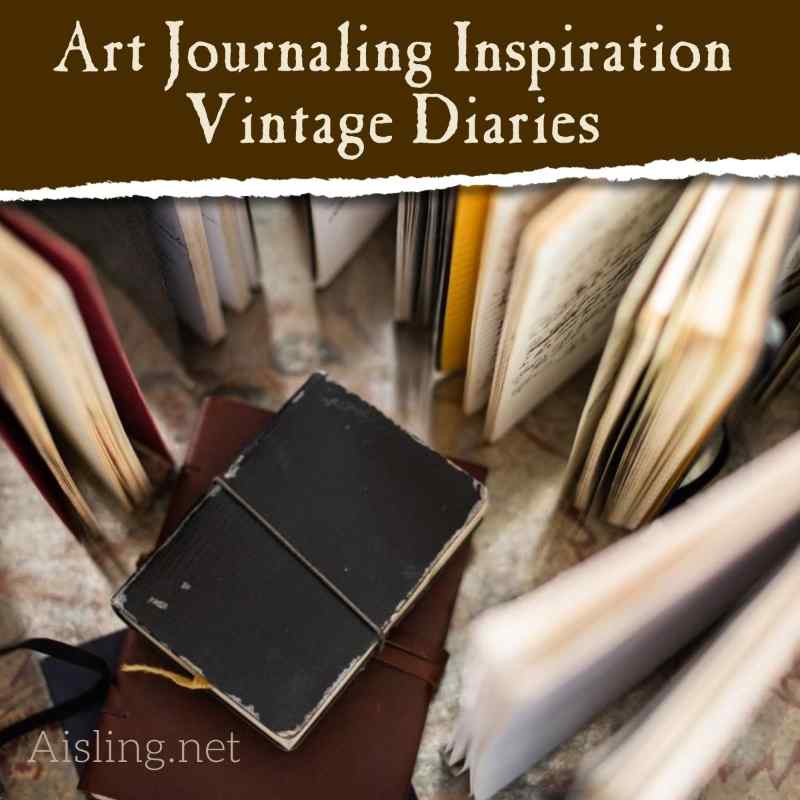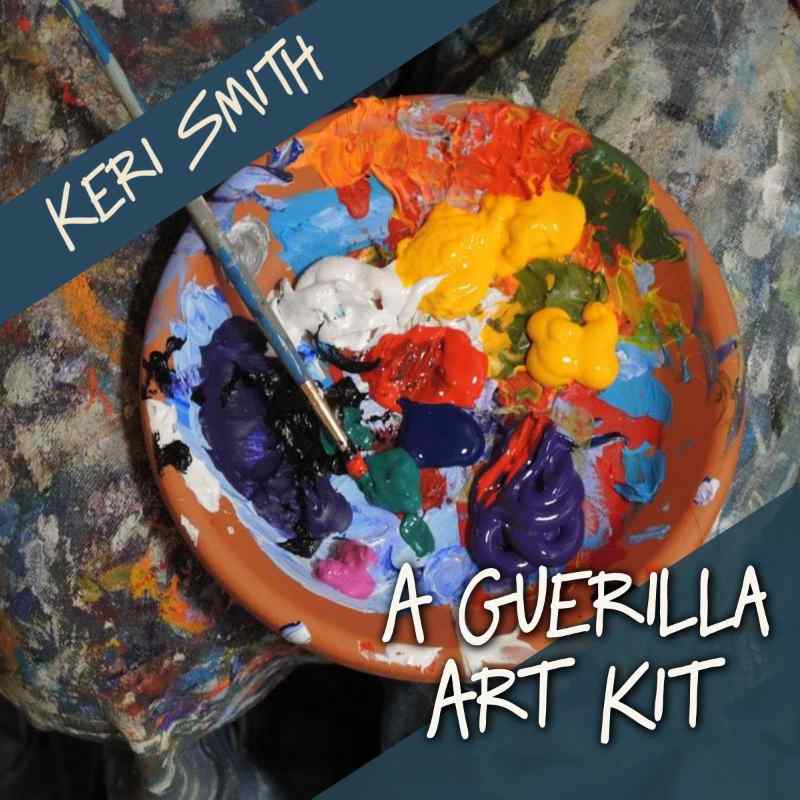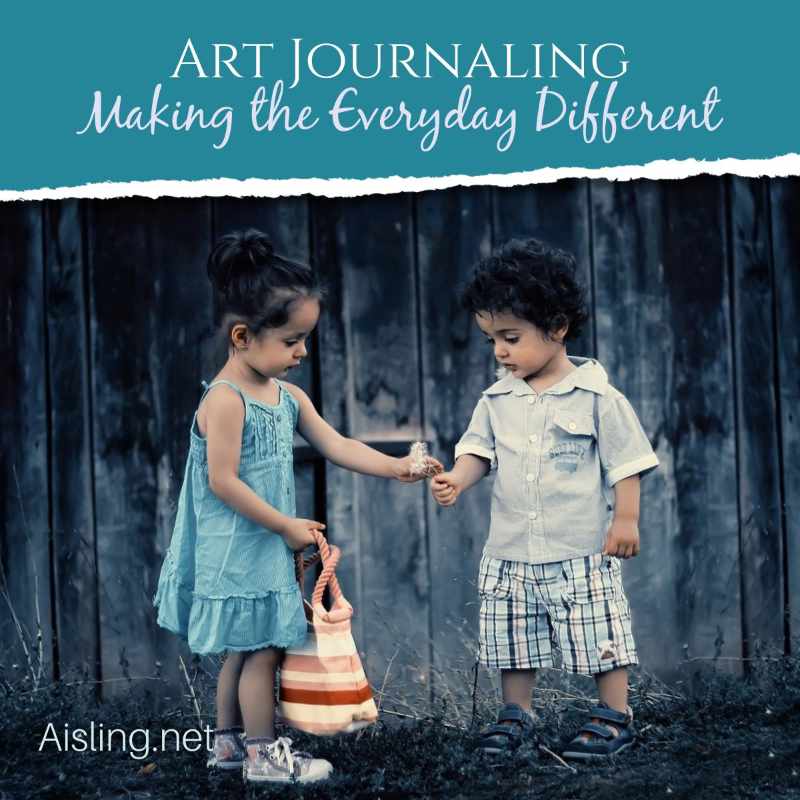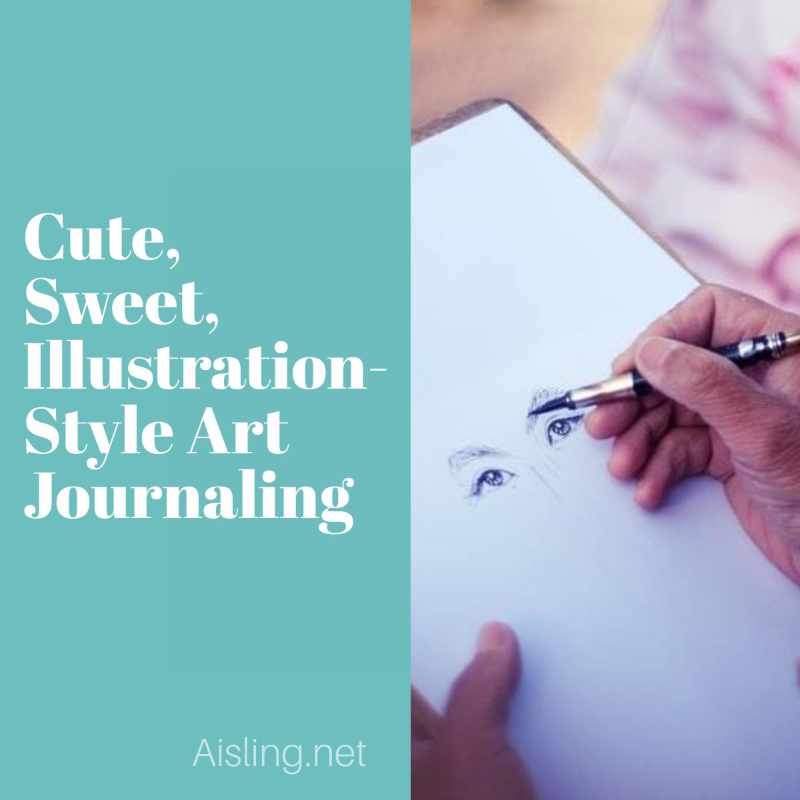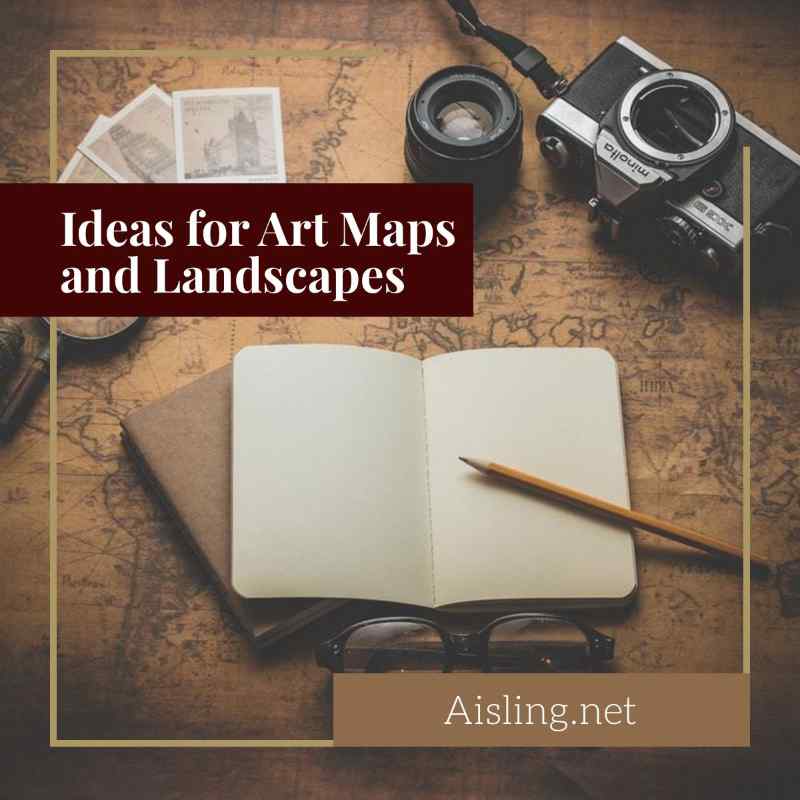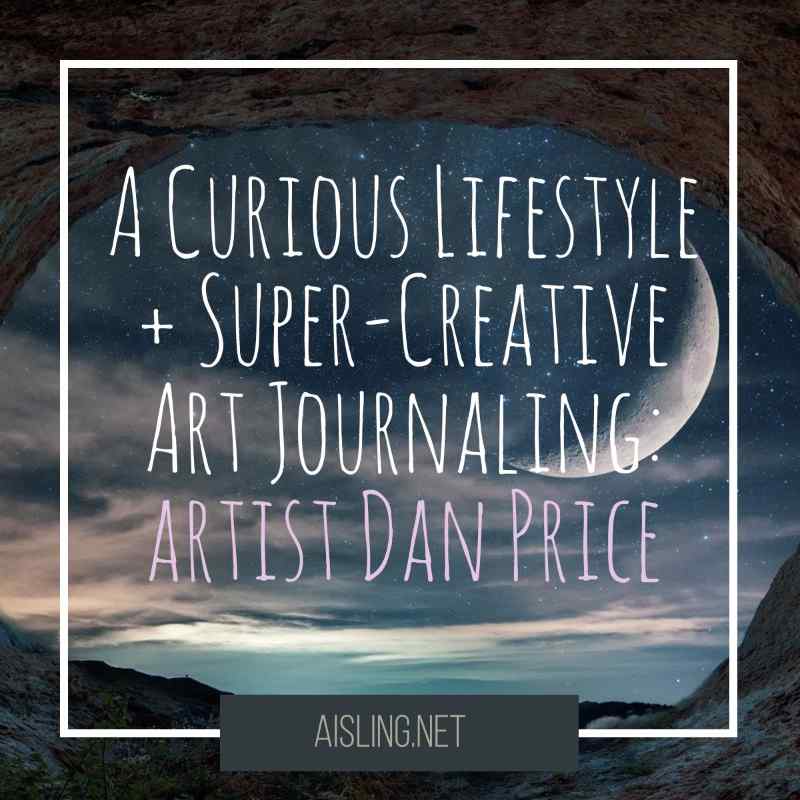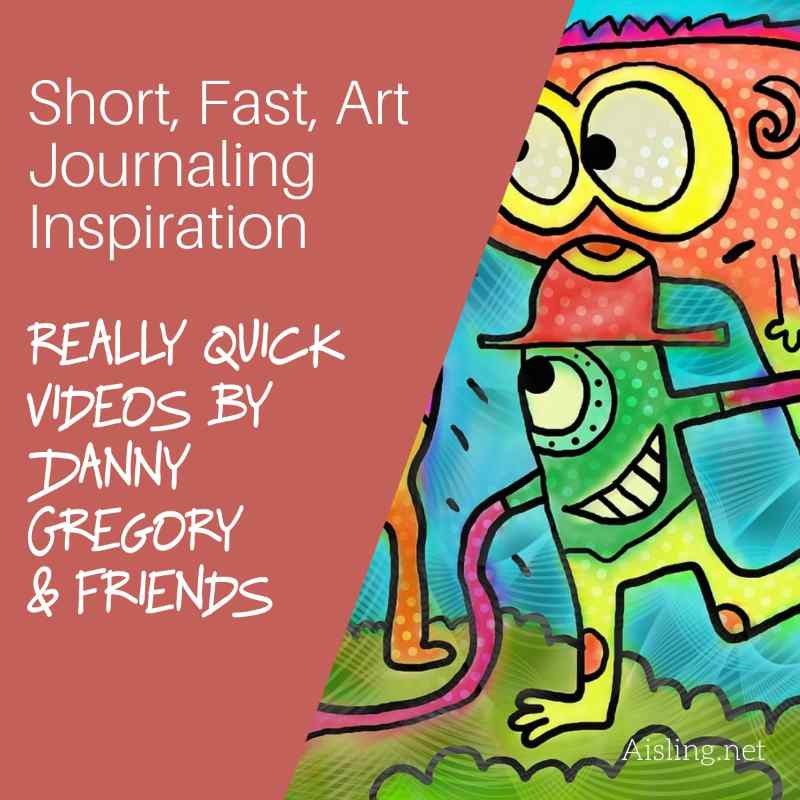Looking for some fresh ideas to add depth to your art journaling projects? This video – by another artist, not me – will inspire you. It includes lots… and lots… and LOTS of art journaling ideas! Color. Texture. Paper, tapes, ribbons, and more. Wheeee! Yes, this kind of mixed-media art can seem overwhelming to a…
Category: Art Journaling
Art journaling – creating and keeping a journal or diary that’s filled with your own art and inspiring images.
Art Journaling? Resist! A Sneaky Way to Add Excitement
Are you looking for easy, clever ways to add more excitement to your art journaling? The answer may be: RESIST! In art journaling, “resist” is a way to keep paint – and some other products – from sticking to the page. Other terms for this include: mask, masking fluid, and frisket. (You’ll see many different…
Art Journaling Inspiration – Vintage Diaries (Video)
Sometimes, we can find inspiration in old, vintage, and antique books. That’s especially true about old diaries. They may not be art journaling examples, but you’ll see fascinating ways people have documented their daily lives, sometimes just with words, and sometimes with illustrations. This 25-minute video shows a variety of old-fashioned diaries. Delicious inspiration! https://youtu.be/iBwmCMbDyjU
Guerilla Art Kit and Other Journaling Ideas – Keri Smith
Keri Smith broke the mold when she first published her “Wreck This Journal” journals. She’s still a great inspiration, whether you’re a beginner or a long-time fan of art journaling and scrapbooking. If you’re not familiar with Keri’s art & philosophy, this video may be a good place to start. It’s about 3 minutes long….
Art Journaling – Making the Everyday Different
Would you like to sketch in your art journal or scrapbook, but need art journaling ideas? This short (under two minutes) video is in German – with subtitles in English. (You’ll understand it, even without the sound on.) This unique idea may give you a fresh outlook, and ideas of what to draw in an…
Cute Ways to Draw in Your Art Journal
Are you looking for drawing and painting ideas? Want to know what to draw in your art journal? Here’s one very cute approach to art. Thanks to Jane Davenport, it can be easy, too. Jane Davenport has inspired many people to create elegant and charming illustrations in their art journals. She’s made this easy with…
Mixed Media Ideas for Art Maps and Landscapes
Maps, cityscapes, landscapes… they’re not just for travel journals. There are many ways you can include them in your personal art journals, too. First, here’s Brie Hatton demonstrating urban sketching in her art journal. For many people, this is the easiest way to draw and paint local scenery in a journal. You can go for…
A Curious Lifestyle and Super-Creative Art Journaling: Dan Price
This 12-minute video is from Danny Gregory’s Sketchbook Club, showing the progress of “Moonlight Chronicles” art with Dan Price. I think it’s a wonderfully inspiring example of how you can share your art journaling with others. https://youtu.be/B_J3Re04cHg Here’s a 35-minute video showing where Dan Price lives and works, in an underground, kind of Hobbit-ish home.
Short, Fast Art Journaling Inspiration – Art of Danny Gregory
Need a quick jolt of inspiration for your art journaling? These brief videos can help… a lot! Danny Gregory is an icon of art journaling. His artists journals were among the first to go viral, starting with his art journaling website and his books, including The Creative License – Giving Yourself Permission to Be the…
Adding Collage Layers in Your Artists Journals
Collage… it’s about layers, right…? Sometimes just a few. Sometimes a lot. They can be layers of paint, crayon, colored pencil, stickers, paper, fabric, glitter, and… Well, you get the idea. Some artists – including me – use lots & lots of layers in our art journals and other mixed media art. Here’s some inspiration…

